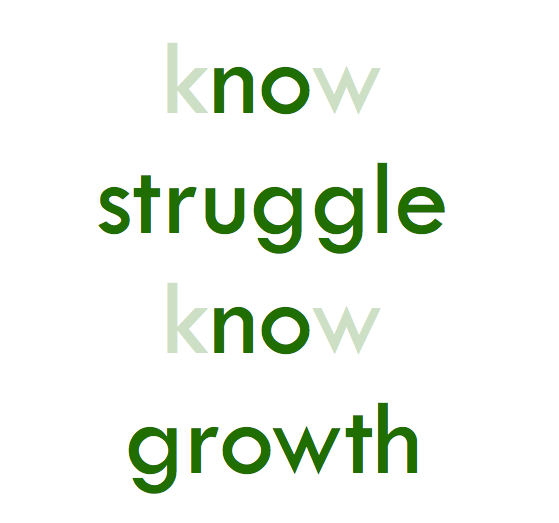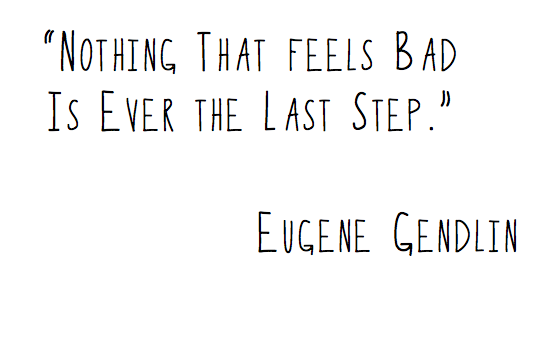Don't Fix Your Loved One — SAVE Them
December 19, 2023

We've all been there, right? You care about someone and you're watching them suffer and you just desperately want to make it better for them. Your sympathetic fix-it-y parts kick up and tell you the best way to help is just yank out that damned nail or tell them how to do it. Boom — problem solved! But for some reason it keeps not working — what gives?
The instinct to help someone you care about is such a good and loving one. So today I'd like to honor your instinct to be there for your loved one, and tell you how to best soothe their suffering. (Spoiler alert: It does not involve the claw end of a hammer.)
Several years ago, I attended a therapy training and they taught us the catchy, somewhat Johnny Cochran-ish phrases (shout out to my fellow alive-during-the-1990s peeps!) "connect before you correct" and "validate before you educate." What that means is that all of that "problem solving" and fixing is just happening too soon in the process. Our first job as loving friends, partners, and parents is to connect and validate. Then, afterward, once our loved one feels really heard and held by us, if they need to get the nail out, we can offer our ideas and suggestions then. So, what does that look like in real life?
Let's say your wife or boyfriend is struggling at work. Their boss is being SUCH a jerk and they're so stressed out and angry! You DESPERATELY want to tell her to quit her job, or tell him what worked for you when your boss was giving you grief last year, but instead, you stop yourself. You remember that instead of fixing them, you need to SAVE them:
Show Up
Accompany
Validate
Empathize
Showing Up means being fully present — stop what you're doing and give them your full attention, turn toward them with your body, and really listen. (Pro Tip: If you're having trouble doing this, you might have a part of you getting triggered in some way. Do some self-exploration or talk to your therapist to determine which part of you might feel uncomfortable sitting with your loved one's feels.)
Accompanying means you're making them feel like they're not alone. ("I'm right here." "I've got your back, buddy." "We'll get through this together." It might also look like physically undoing their aloneness — hold their hand or put your arm around them if that feels good to them.)
Validating them lets them know their feelings make sense and they're not crazy. ("I can totally see how you'd feel like that." "Of course that upset you — it would upset anyone!" "That makes sense!")
Empathizing is feeling with them. ("Ugh, I'm so angry that happened to you, too!" "Oh, that just makes me so sad you're going through this right now.")
At the end of this process, once your partner feels really heard and held, you can check and see if they'd like to hear an idea you had about how to help. At last, hammer time!! (Hello again, '90s peeps!)
Seriously, it's rarely our strategies and action items that make our loved ones feel better — it's knowing that you've got their back and their feelings are valid. Give them your attention, your compassion, and your love, and 99% of the time, that will be "the solution." (But not with that nail — I mean, c'mon.)
New Year's Belly Breathing Challenge
January 09, 2023

What if I told you there's a medicine for stress and anxiety you could take that's incredibly effective, completely cost-free, and has zero side effects? Consider the following post a PSA/infomercial for the amazing, life-changing powers of deep breathing. Everyone knows that deep breaths are good for you, and something to do when you're upset. But it's a classic for a reason! Let's talk today about deep breathing — belly breathing— and why and how to incorporate this ridiculously simple and effective tool into your life every day.
When we are scared or stressed, our breathing naturally becomes shallow and rapid as we move into a fight-or-flight stress response. This is GREAT if you're being chased by a bear, but becomes inefficient and dangerous when our bodies respond that way to everyday stressors at work or home (looking at you, times I have to call customer service for any reason). The effects of chronic stress on our physical and emotional health are myriad and, um, is "horrifying" too stressful a word to use here? Yes? Ok, let's just go with "not great."
Managing stress is essential for anyone who wants to be healthy, but if we have a proclivity for anxiety or depression or any underlying physical ailments, coping with stress is an even greater necessity. To protect our health to function as our best selves in the world, we need to let our brains know that we're not actually in bear-attack-level danger, and to switch from the cortisol-soaked sympathetic nervous system to the rest-and-digest chill mode of the parasympathetic nervous system. (FYI, there are many ways to manage stress and regulate our neurochemistry — yoga, cardiovascular exercise, gratitude journaling, time in nature, meditation, connection, etc. — but today we're just focusing on belly breathing.)
Here's how to do it:
- Lie on your back on the floor/a yoga mat
- Put one hand on your stomach and the other on your chest
- Breathe in slowly and deeply through your nose, filling your belly as deeply as you can. If you're doing it right, you'll feel the hand on your belly lift and the hand on your chest remain basically the same
- Hold the breath until you feel a need to exhale
- Exhale deeply through pursed lips, making a big WHOOSH sound, feeling your stomach deflate with the out breath
- Repeat
Do this for 5-10 minutes at a time, 3-4 times per day — I like to recommend when you get up in the morning, on your lunch break/at the end of your work day, and before bed. As you learn what being really relaxed feels like, you can start noticing when you're moving out of a relaxed state and stress mode (signs include stressful thoughts, body tension/physical distress, feelings of overwhelm, frustration or anxiety), and then take a few deep belly breaths to get back on track. Tech tip: If you have an Apple Watch, you can use the Mindfulness app to set a deep breathing timer for 5 minutes and even schedule reminders on a daily basis (you can also adjust the number of breaths per minute in your Watch app, if you choose). Give it a try and notice how you feel!
Choose Good People
September 24, 2021

It's Friday, and I'm ready to swing, pick up takeout and hang out quietly with my family (hello, pandemic, my old friend!)… Whether or not you're having the wild weekend Aaliyah referenced, here's a quick reminder that who you surround yourself with matters. Consistent research shows us that healthy relationships make us more resilient in the face of stressors (hello, pandemic, my old friend, again!) and can even make us feel less physical pain. Among EFT couple therapists, there's a famous study where women were given a small electric shock on their foot while in an MRI machine. The women who went through this alone showed elevated fear and pain responses, those holding a stranger's hand felt some diminishment in the fear and pain, and for those holding their partner's hand, brain scans showed little to no fear or pain response. There's two lessons here: Research psychologists are probably sadists (they are ALWAYS hurting/stressing out their subjects) and also that secure attachment is MAGIC. Take good care of you and your nervous system by leaning in to the people who make you feel better and setting healthy boundaries with people who deplete you — your mind and your body will thank you!
Family Estrangement Resources
May 03, 2021

This is the week our culture celebrates moms — which is awesome! …unless you're among the 20% or so of people estranged from a family member (like your mom). Shame about having a dysfunctional relationship with a family member leads many people to suffer the pain of that disconnection in silence, especially on family-focused holidays like Mother's Day, Father's Day, Thanksgiving, and Christmas. Dysfunction among family members is not rare — it's very common. And just as romantic relationships sometimes don't work out despite our best efforts, family relationships, too, can become so toxic the healthiest solution is to end the relationship.
Interestingly, while most of us would celebrate the ending of a toxic romantic relationship, there is a surprising (and enduring) cultural pressure around keeping parents and children together at all costs. Just as there once was a significant cultural taboo against divorce, our culture puts a premium on keeping blood relations in contact. Even after experiencing severe mistreatment, people who are estranged from family members often report being scolded to forgive and forget, that nothing is more important and family, as if their decision were a whim, or coming after years of a basically close and happy relationship with their family member. In fact, for those who choose to step back from dysfunctional family relationships, the decision is often a gradual, years-in-the-making, heart-rending process. Estranged people typically have endured histories of abuse, neglect, betrayal, abandonment, and criticism/contempt — and have gone through years of attempting to work through the conflict — before electing to disengage. Pressure to reunite with family members can feel very shaming. Most estranged children of toxic parents report that the most painful part of estrangement is not the loss of their family member, but the sense of judgment from others and the grief of never having the mother-father-sister-brother they needed.
If you are estranged, know you're not alone. Oprah Winfrey, Matthew McConaughey, Brie Larson, Aaron Rodgers, Adele, Mariah Carey, Drew Barrymore, Jennifer Aniston, and members of a certain royal family (ahem) all have distanced themselves from toxic family relationships to take care of themselves. In fact, the emerging research suggests that, for most estranged people, leaving the dysfunctional family relationship was a good decision that created a sense of relief and peace. If you have a loved one who's estranged from a family member, be mindful of the shame they may feel around making this hard decision and avoid counseling them to repair things at all costs. As always, validate them and accompany them in their pain and affirm their right to take care of themselves.
If you'd like more information, here are a few helpful resources on family estrangement:
New York Times: When an Estranged Relative Dies, Some Face Grief, Regret and Relief
GOOP: How Do You Handle Being Estranged from Family?
Good Housekeeping: What Is Estrangement — And Should You Consider It?
Inc.: Estranged from Your Family? Here's Why You Should Stop Feeling Guilty
University of Cambridge: Hidden Voices: Family Estrangement in Adulthood Survey Results
What's Behind Your Anger?
March 17, 2021

You guys, I could write SO MUCH about this topic. But here's the TL: DR version — anger is often just a surface emotion for us, a shell we use to protect our tender hearts. In EFT couple therapy we call that a secondary emotion, a feeling that shows up to cover up a more vulnerable primary emotion, like feeling hurt, alone, sad, scared, or ashamed.
To clarify, anger is a very legitimate and important feeling. Angry feelings (like being frustrated, annoyed, irritated, enraged, etc.) set boundaries on behalf of the self, push back against injustice, and assert, "This isn't right!" We wouldn't be complete as people without access to our angry feelings. For some of us, feeling angry is REALLY hard, and being angry IS the vulnerable feeling we don't want to share.
For many of us, however, feeling injured or threatened emotionally tends to put us into "fight mode." In that mode, we shield our deep-down vulnerable feelings of hurt, sadness, loneliness, fear, and shame behind an angry wall, where no one can see how much pain we're really in. Although vulnerability is really scary to share, vulnerability has a tremendously positive impact on connection and communication. When someone shares their vulnerable truth with us, we tend to melt. By contrast, when someone comes at us in an angry, scolding, or defensive way, we tend to…not melt.
For a relationship/communication boost, try slowing down when you're angry and taking a look at what else you might be feeling. Ask yourself, what was the tender, primary emotion that happened in the nanosecond before the anger? Were you sad? Were you scared? Were you ashamed? Be brave and share that core feeling with your partner in a soft way and see how it goes — you might be pleasantly surprised.
To Calm Big Feelings, Validate Them
March 06, 2021

It was a Sunday afternoon when my then 5-year-old son first asked to go out into the front yard to have a go at his new tee-ball set. I imagine, as he drew the bat back and blasted away, he expected a pretty spectacular hit. If not exactly the kind of dinger that is only possible with the help of metabolic steroids, then at least something better than the unimpressive, well, flop that the little plastic ball did just a few feet from the tee. My son howled in anger and disappointment. In a nanosecond, my brain had produced a few possible responses: I could tell him that his body hadn't been lined up right, that his grip was off, and, in short, that he should cool it, it wasn't a big deal — we could just try again.
Fortunately, that weekend I had been at a family therapy training, and that very day my teacher reminded us that parents should always "validate before you educate." In seconds, I shifted from wanting to fix or control his reaction to just seeing my son was angry and disappointed. Of course he was! Who isn't frustrated when they want to do something and it doesn't go right? So I said, "You're mad! You wanted the ball to go far, and it didn't, and you're really frustrated! That makes sense. I'd be frustrated, too!" He looked at me as my words slowly percolated down. In about ten seconds, the wave of emotion had passed and he was ready to come back to the ball and bat, ready for my basic pointers about his at-bat form. He got the basics of baseball that day, but I was the one that learned the lesson.
This memory comes back to me often when I talk to my clients about the importance of validating emotions — for themselves, for their partners, for their children. Not because I've since been perfect in my validation as a partner and parent — sadly, my validation batting average is…not exactly 1.000. No, this is the memory that epitomizes how magical validation is, how deeply important and, well, efficient it is. A new study out of Ohio State University affirms what my family therapy teacher was saying that day: invalidating feelings makes them worse and makes it harder to feel better. In the study, only participants who were validated reported their mood went back to normal after recalling an event that made them angry. Invalidated participants found that their moods continued to decline.
Many of us are uncomfortable with core feelings like sadness, anger, fear, and even joy — often because our caregivers were similarly uncomfortable with them or because someone's out of control anger, fear, or sadness created a dangerous climate for us in the past. So, naturally, when faced with our partner's anger or our sister's sadness in the present day, we try to move away from it. Afraid it'll get bigger, grow out of control if we give it attention or imagine ourselves in their shoes. This was what fueled my (wrong) instinct to tell my son how to fix it, or try to talk him out of his angry feelings. The science is clear that if I'd done that, I would have made him angrier for longer and caused damage both to our relationship and his trust in his own feelings. I don't want that for my son or anyone I care about — and I'm sure you don't want it for your loved ones, either.
So, what is validation and what does it look like? Let's start with what it isn't. Invalidation is judging, rejecting, or ignoring another person's emotional experience. As vulnerability researcher Brene Brown says, empathic, validating statements never begin with "at least" or trying to find the silver lining. If I'd told my son "at least you hit the ball" or some version of the old classic "big kids don't cry," I would have been covertly telling my child, "your feelings are not ok." Validation is recognizing and accepting another person's emotional experience, connecting with them on a human level and undoing their aloneness. Validating statements sound like:
- "Of course you feel like that."
- "That makes sense."
- "I'd feel like that, too! Anyone would in that situation."
- "You're not crazy/wrong. That wasn't ok."
- "I can see why you'd feel scared."
- "That's totally normal/understandable."
- "I've been there, too."
- "Ugh! That's awful!"
Validation not only helps regulate emotions, it builds connection and fosters resilience. It tells people they are important, that they are accepted and cared about, that they are understood. Paradoxically, honoring their difficulty helps your loved one persevere. In my son's case, it allowed him to be open to trying again and to receiving my coaching. In contrast, invalidation fosters shame, rigidity, and toxic aloneness. So, the next time your loved one is angry, sad, or scared, try validating that it makes sense they feel bad. Counterintuitive as it may seem, it really will help them feel better faster.
Resilience in Winter: Allowing Emotional Hibernation
February 19, 2021

I just read this lovely article by AEDP therapist Eileen Russell and wanted to share it with you. Some quotes that really struck me:
“I think of resilience as comprising processes that human beings use on behalf of the self to both survive adversity and also to thrive in favorable conditions. To my mind, resilience is not about being “strong” in the sense of being unaffected by what life throws at us. Increasingly I think it is truly about flexibility. How do we stretch into spaciousness and opportunity when it presents itself for our growth and expansion and also know when and how to contract and save energy when conditions are truly inhospitable?”
“So, can human beings contract without shutting down completely? Can we find ways to surrender to the withdrawal that happens under experiences of chronic stress without turning against ourselves or each other? If we let go of the unrealistic expectation that we could be feeling so much better if only we (fill in the blank), might we experience this mid-winter period of our lives as slightly more bearable and circumscribed? Can we develop some gentleness toward our failure to “overcome” our circumstances?"
“It is true that none of us can go to sleep for the winter. But perhaps metaphorically it is helpful to imagine that nature may have endowed people with capacities to take in less and to put out less when it is necessary for our psychic survival. If we think of this state as a kind of psychological hibernation we might be less inclined to pathologize it or to fight it as if we could actually create the stimulation and possibilities that are available to us under other circumstances. If there is a season for everything, perhaps this time invites us to rest and let go of our need to turn reality into what it is not. If we allow for a certain psychological hibernation now, we might trust ourselves to welcome “spring” when it comes. Because it will come.”
Trusting the Pull of Emotions
July 12, 2019

My colleague, the awesome EFT therapist and supervisor Jennifer Olden, just shared this the other day, and I'd like to share it with you:
"My best friend is a kayaker and she shared that one of the dangers of kayaking is it’s possible to get caught in an eddy and be dragged underwater and drown. Your best shot a survival is to not fight it. You have to let the river pull you to the bottom, relax all your limbs. At the bottom of the river, the current reverses and you will be propelled back to the top. It’s beyond counter-intuitive to relax in the face of death… Focusing on the deepest grief, the greatest fear, and the most harrowing moments are the currents pulling us down; trusting the biology of emotion means that we know we will be propelled back up."
I just love how Jen puts that. Almost all of us are learning to not fight the current of emotion, but to trust that there's an important biologically-driven process at work when our feelings show up. So many of us get caught in fighting the eddy, avoiding the currents trying to take you where you need to go to heal—and, honestly, who wouldn't want to avoid those currents when the eddy feels so dark and deep and dangerous?!
While we all feel the urge to avoid, it's so important that we understand that we must instead lean into the very thing that's scaring us. AEDP therapist Ron Frederick talks often in his wonderful book Living Like You Mean It about the importance of letting the wave of emotion hit you, trusting that it will move through you and take you where you need to go to feel better. When we feel our feelings all the way through, there's a sense of release and completion. So, the next time you find yourself getting pulled down by the eddy of emotion, try leaning into it, trusting it to take you where you need to go.
Know Struggle, Know Growth
January 19, 2019

"If there is no struggle there is no progress. Those who profess to favor freedom and yet deprecate agitation are men who want crops without plowing up the ground; they want rain without thunder and lightning. They want the ocean without the awful roar of its many waters." — Frederick Douglass, 1857
I LOVE this quote. At a global level, it reassures me that the things that feel so tumultuous and threatening in our world right now are normal processes, that next season's crops come after first plowing up the ground, that pain comes before birth. It shifts me from feeling afraid and threatened to feeling more hopeful—and even curious about what growth might be on the way.
I thought of this quote recently when an awful, roaring wave of anxiety disturbed my calm ocean within. With the benefit of hindsight, I see that my seemingly unwelcome anxiety was actually the start of a beautiful process of healing something deep within me. As I healed that part of me, I felt empowered and, yes, free.
This quote reminds me to just let my feelings come, to stay open, curious, and connected (to myself and my loved ones) and trust that struggle within me is actually a harbinger of growth and change. It invites me to remember that my distress is the first sign of a process working within me toward greater healing, happiness, and wholeness. It reassures me that if I stay with my distress and trust it, relief is on the other side of that wave, because "nothing that feels bad is ever the last step."
And so I invite you to sit with this quote and notice what you feel inside as you read it. Think of how often great pain, anger, or fear has come before a place of growth, healing, understanding, relief, joy, or freedom. I wonder how it would be for you, right now, to welcome something inside you that feels hard, confusing, or scary, knowing that all you're feeling is the start of things being much, much better for you.
Be a Man
June 07, 2016
This clip explores the toxic pressures on men to hide their feelings and how we (still!!) give boys and men the sense that they must be completely invulnerable in order to be masculine. This seems to be a key reason so many men shut down and withdraw with their partners, out of the fear that they'll be seen as weak or unattractive if they share their vulnerable feelings and needs with their loved ones.
The Price of Invulnerability
March 21, 2016

Another great video from Dr. Brene Brown reviews the costs of avoiding vulnerability. When we're afraid to be vulnerable:
- "Joy becomes foreboding—something good happens and we become compelled to beat vulnerability to the punch."
- "Disappointment becomes a lifestyle…it's easier to live disappointed than to feel disappointed."
And, of course, we numb out. But as Brene reminds us, "you cannot selectively numb emotion." Numbing our pain and fear also means numbing the joy, love, safety, happiness, pride, and closeness that we could be feeling…and without that, we lose all the good things that can help us hang on through the hard times, all the things that make life meaningful.
The Power of Vulnerability
March 19, 2016
Dr. Brene Brown is a researcher who studies vulnerability…who hates vulnerability. Like a lot of us, Dr. Brown struggles with shame, self-judgment, and a sense of weakness when discussing her perceived failings and vulnerable emotions. Her storytelling prowess, hard-won authenticity, and self-deprecating humor make her a powerful advocate for treasuring the parts of ourselves we most want to hide.
These two devastatingly funny, heartfelt TED talks do a wonderful job of explaining how critical vulnerability is to our relationships with our selves and being authentic and how vulnerability and emotional risk is ultimately the thing that creates connection and safety with others.
https://www.youtube.com/watch?v=iCvmsMzlF7o
https://www.youtube.com/watch?v=psN1DORYYV0
These two devastatingly funny, heartfelt TED talks do a wonderful job of explaining how critical vulnerability is to our relationships with our selves and being authentic and how vulnerability and emotional risk is ultimately the thing that creates connection and safety with others.
https://www.youtube.com/watch?v=iCvmsMzlF7o
https://www.youtube.com/watch?v=psN1DORYYV0
Empathy 101
March 06, 2016

I assisted the awesome Jennifer Olden with one of her Hold Me Tight couples' workshops this weekend, and she shared this really wonderful video from Brene Brown on empathy. Although research continues to tell us how incredibly important empathy is to successful relationships, many of us have struggled to define what exactly empathy IS.
According to Brene, empathy has four qualities: perspective taking, staying out of judgment, recognizing emotion in others and then communicating that. "Empathy is feeling WITH people." Someone's in a deep hole, and you say, "hey, I know what it's like down here and you're not alone." An important lesson for all of is that you can't really stop someone's suffering, but you can make sure they don't suffer alone. Empathy, she says, is vulnerable because "in order to connect with you, I have to connect with something in myself that knows that feeling."
She also emphasizes how your empathic presence is the antidote to your loved one's emotional pain vs. trying to come up with a solution. "Rarely can a response make something better—what makes something better is connection."
Check out the clip and learn more about the awesome power of empathy…while watching a judgmental antelope eating a sandwich.
The Still Face Experiment
February 12, 2015

One of the most important things that attachment researchers have done is to demonstrate just how much we are wired for deep, emotional connection with the people that matter to us. In the brilliant — but hard to watch — Still Face Experiment, scientists asked a mother to stop responding to her baby for two minutes, to make her face still and neutral. In that short time, the baby becomes very distressed, trying and trying to reconnect with her caregiver, ultimately turning away in despair from her unresponsive mother.
Fortunately, in the video, mother and baby are quickly reunited and able to repair. But what about the baby who is not so lucky, who has — like many of us had — a depressed, neglectful, or otherwise emotionally unavailable caregiver? What might be the long term impact on that baby’s ability to manage and express emotions, to communicate, and to trust in others? Because our need for attachment is lifelong, this experiment also explains why withdrawing behaviors can be so damaging to romantic partnerships. Just as the baby goes into panic and despair at her mother’s lack of response, so might a husband or wife experience terrible pain and confusion in the face of a shut down, emotionally unresponsive partner.
This simple experiment tells us so much about our profound dependence on our attachment figures, a dependence that we never outgrow.

